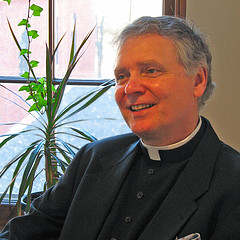Capuchin Crypts: Memento Mori
 A previous group of students studying Christian Faith in Art asked that a trip to the Capuchin cyrpts be included in the tour. These crypts represent a spiritual work of art, designed for its impact on the emotions and the soul. Fr. Graham found these crypts to be a powerful experience of the connection between faith and art, and has included it in every trip since.
A previous group of students studying Christian Faith in Art asked that a trip to the Capuchin cyrpts be included in the tour. These crypts represent a spiritual work of art, designed for its impact on the emotions and the soul. Fr. Graham found these crypts to be a powerful experience of the connection between faith and art, and has included it in every trip since.
Capuchin friars, hundreds of years ago, desired to express the Christian belief that death is not the end of life, but its beginning - leaving behind the temporal (including our bodies) for the eternal. They also wanted to keep that reality foremost, to avoid any strong attachment to the things of this world.
They chose to work in a most unusual medium: the bones of the deceased members of their order. They received permission to unearth the remains of 4,000 of their confreres, and use them to create works of art.
The primary purpose, though, is the spiritual impact. Several of the rooms include a skeleton, dressed in his Capuchin robes, standing as though to work, walk, or preach. In the last room, three skeletons stand to one side. A small sign, printed in several languages, reads:
"As you now are, we once were. As we now are, you will one day be."


No comments:
Post a Comment